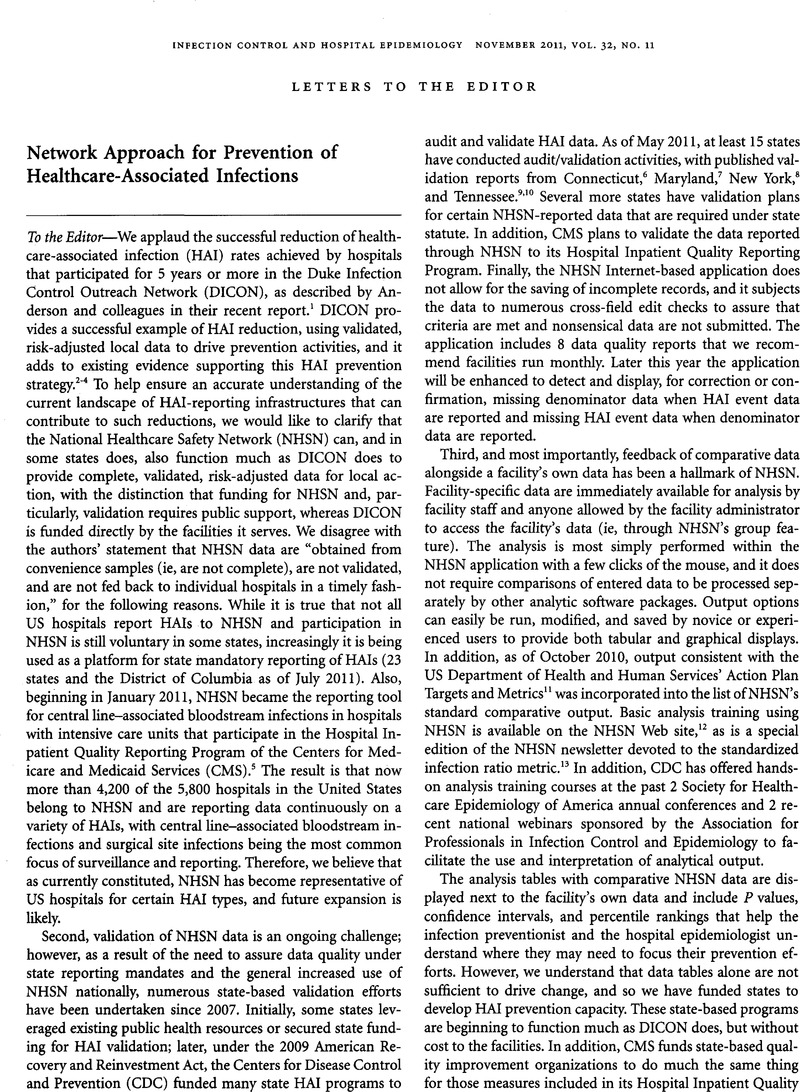Crossref Citations
This article has been cited by the following publications. This list is generated based on data provided by Crossref.
Hebden, Joan N.
2012.
Rationale for accuracy and consistency in applying standardized definitions for surveillance of health care–associated infections.
American Journal of Infection Control,
Vol. 40,
Issue. 5,
p.
S29.
Blanchard, Ana C.
Fortin, Elise
Rocher, Isabelle
Moore, Dorothy L.
Frenette, Charles
Tremblay, Claude
and
Quach, Caroline
2013.
Central Line–Associated Bloodstream Infection in Neonatal Intensive Care Units.
Infection Control & Hospital Epidemiology,
Vol. 34,
Issue. 11,
p.
1167.
Quach, Caroline
Milstone, Aaron M.
Perpête, Chantal
Bonenfant, Mario
Moore, Dorothy L.
and
Perreault, Therese
2014.
Chlorhexidine Bathing in a Tertiary Care Neonatal Intensive Care Unit: Impact on Central Line–Associated Bloodstream Infections.
Infection Control & Hospital Epidemiology,
Vol. 35,
Issue. 2,
p.
158.
Zavalkoff, Samara
Korah, Nadine
Quach, Caroline
and
Cusi, Daniele
2015.
Presence of a Physician Safety Champion Is Associated with a Reduction in Urinary Catheter Utilization in the Pediatric Intensive Care Unit.
PLOS ONE,
Vol. 10,
Issue. 12,
p.
e0144222.
Goes, Connie
2015.
Supportive Care in Pediatric Oncology.
p.
283.
Quach, Caroline
Shah, Rita
and
Rubin, Lorry G
2018.
Burden of Healthcare-Associated Viral Respiratory Infections in Children’s Hospitals.
Journal of the Pediatric Infectious Diseases Society,
Vol. 7,
Issue. 1,
p.
18.





